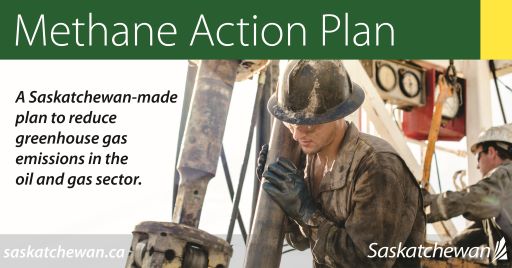Released on January 23, 2019
The Government of Saskatchewan has released regulations with the goal of reducing greenhouse gas (GHG) emissions from venting and flaring in the province’s upstream oil and gas sector by 4.5 million tonnes per year by 2025.
The regulations—part of the province’s Methane Action Plan (MAP)—signal a comprehensive, results-based approach that will require industry to annually reduce GHG emissions to meet the 2025 objective. Included in the regulatory measures are annual penalties for non-compliance.
In April 2018, the federal government announced blanket methane regulations for the oil and gas sector, which are scheduled to come into force in 2020.
“Our regulatory package commits us to an alternative, robust plan to implement GHG emission reductions that help to achieve our climate change goals, while providing industry with the flexibility to implement those reductions in an effective, economically viable way,” Energy and Resources Minister Bronwyn Eyre said. “This made-in-Saskatchewan approach will meet, and in many instances exceed, federal expectations.”
The regulatory program was established following extensive consultation with industry and other stakeholders to ensure the characteristics of Saskatchewan’s upstream industry were fully addressed. MAP includes complementary programs and policies that protect industrial competitiveness and limit the risk of investment flight and carbon leakage to jurisdictions with less stringent standards.

The plan outlines the implementation strategy for commitments outlined in the Upstream Oil and Gas Industry section of Prairie Resilience: A Made in Saskatchewan Climate Change Strategy, released in December 2017.
Key elements of the action plan include:
- reaffirming provincial regulatory jurisdiction over GHG emissions in the energy and resources sector;
- new, made-in-Saskatchewan, results-based regulations—developed in consultation with industry—with the goal of reducing GHG emissions by 4.5 million tonnes of carbon dioxide equivalent (CO2e) annually by 2025; and
- the introduction of specific programs and policies that support emissions management innovations and technologies in the sector, including the expanded Oil and Gas Processing Investment Incentive and the Saskatchewan Petroleum Innovation Incentive, and encourage the increased use of methane for heating, electricity production and other commercial applications.
“Saskatchewan’s Methane Action Plan is an example of an efficient regulatory framework aimed at improving environmental outcomes, while protecting competitiveness,” Canadian Association of Petroleum Producers Vice-President Western Canada Operations Brad Herald said. “The results-based design enables innovation, encourages new technology, and provides industry with the flexibility to apply strategies for methane emission reduction that are both efficient and effective.”
“The Saskatchewan government has taken a pragmatic and balanced approach through the development of the outcome-based Methane Action Plan,” Explorers and Producers Association of Canada President Tristan Goodman said. “The transparent engagement approach has resulted in a policy that allows industry to innovate and remain competitive, while also ensuring policy objectives are achieved.”
The upstream oil and gas industry is the largest sector of the provincial economy, accounting for approximately 15 per cent of total Gross Domestic Product (GDP). The sector supports roughly 34,000 full-time equivalent jobs and has been the top provincial exporter nine of the last 10 years.
In recent years, companies in the sector have invested between $4 and $6 billion annually and have contributed more than $1 billion annually to provincial revenues.
Detailed information on the Methane Action Plan is available at http://www.publications.gov.sk.ca/deplist.cfm?d=310&c=6450.
-30-
For more information, contact:
Deb Young
Energy and Resources
Regina
Phone: 306-787-4765
Email: deb.young@gov.sk.ca

